Chinese food is varied and wonderful, but sometimes I need a change. South-East Asian food in China is excellent, but Western food in Chinese restaurants is generally of a poorer standard than most dishes I can prepare at home.
As I buy more groceries I’’starting to balk at the prices of certain non-Chinese ingredients at the usual outlets. Chains such as BHG or Jenny-Lou are helpful sources of American staples but also charge a heavy premium for fresh items that have travelled much less distance, such a simple potato. These chains also don’t stock fresh herbs and spices, even those like lemon grass or galangal from relatively nearby Thailand. This is a shame as the unavailability or excessive prices of high quality European ingredients has led to me cooking more non-Chinese Asian food, in particular Thai and Malay.
Other chains have an equally wide range but show little understanding of their produce – I always suspected there wasn’t much meat content but was still surprised to see tins of Spam nestled in the Organic Vegetables section of the Olé Supermarket.
A trip to the nearby wet market did uncover a stall selling a reasonable range of South-East Asian dried spices and these have sufficed for a while, but a Thai restaurant manager gave us a tip off about where the restaurants buy their fresh ingredients.
Sanyuanli Market
This little strip of food stalls is well hidden behind a quiet road north of Sanlitun. Here can be found the wholesalers of Western and South East Asian fresh foods.
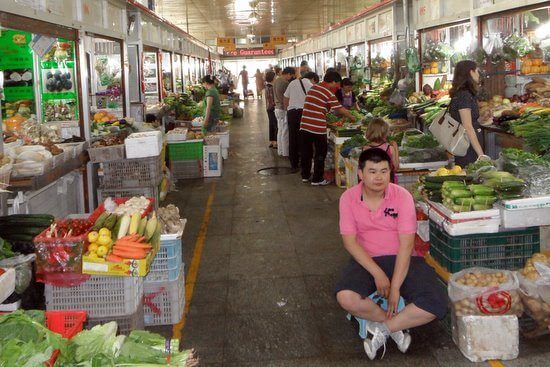
The market
The market is essentially a single covered street lined with stalls ranging from tiny greengrocers to a lady that sells little but sieves. The grocery displays are compact, but bountiful and attractive, with items ranging from avocados to zucchini.
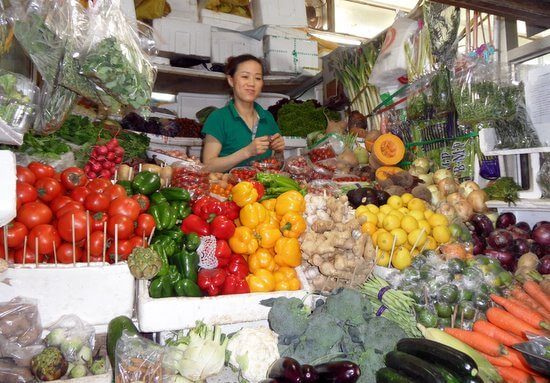
Note all the fresh herbs hanging round the top of the stall
The butchers at Sanyuanli have the most western looking cuts of meat I’ve seen in a long time – they’re cleanly trimmed without any head, feet, offal or other wobbly bits lying around. They also have a good selection of eggs, from free range chicken and duck to rarer quail and even pigeon eggs.
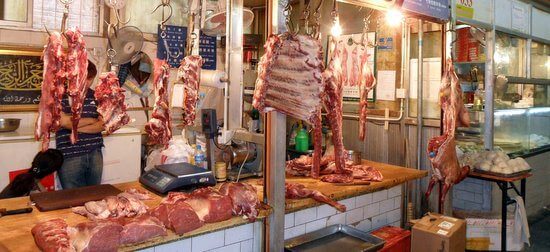
Butchers shop at Sanyuanli Market. The bakers can be seen on the right
The fishmongers have well prepared seafood, including rarities such as tuna steaks.
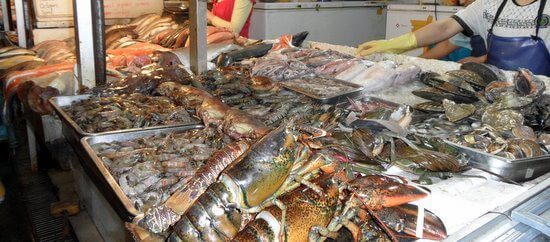
In the middle there are stalls of cupboard stables such as American mustard, English HP sauce and French mayonnaise. These stalls also stock useful packet items such as taco shells and Malaysian spice mixes. This is also the place to find dried herbs that aren’t used in local dishes, such as sage and paprika. Best of all there are 3 fridges full of fresh European cheeses.
The only Chinese food represented is from a couple of excellent bakers producing pancakes, buns, naan and fresh hand-made noodles. They also stock a selection of rustic looking cold dishes such as seaweed and chickens feet.
Another stall was piled high with nothing but crates of Stella Artois. True to form, the owner was wearing a wife beater sleeveless top and reading the paper whilst his wife did all the work.
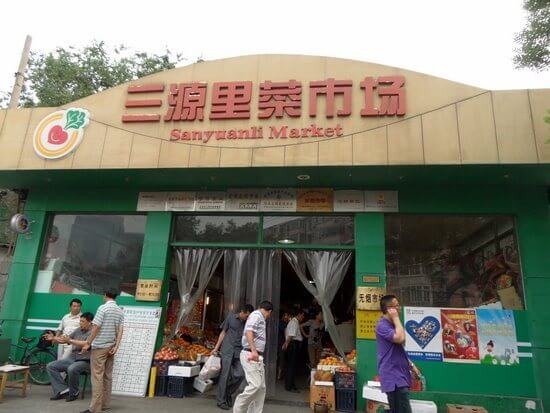
Outside Sanyuanli Market
Despite the sheer range of goods uncommon to Beijing the prices are remarkably reasonable, particularly on the fresh fruit and vegetables. Goods are still not cheap compared to Chinese ingredients, but do represent excellent value. Most items cost between a third and a sixth that in the dedicated expat shops.
It’s not really a place to recommend to a tourist, but definitely a welcome respite if you’re going to be staying and cooking in Beijing for some time.
Sanyuanqiao,
Shunyuan Jie (opposite Jingkelong Supermarket, west of Sanyuan Dongqiao),
Chaoyang District

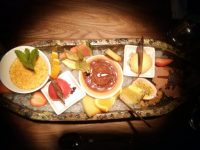
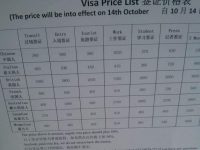
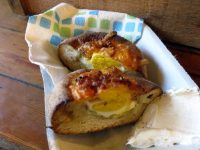





Thank you so much for this post! I have been reading your blog regularly now since we will be moving to Beijing this summer and it has been very informative. This particular post is great because the apartment we are very interested in is in the Sanlitun area. Once I learn some mandarin maybe I will be confident enough to shop at this market.
Thanks again!
Jen
Hi! I should have mentioned that most of the stall holders are used to dealing with expats and speak various levels of English, Russian and a few other languages.
Understandably they don’t always know foreign words for some of the rarer items that they stock such as tamarind or galangal, so it’s a good idea to carry a dictionary. I tend to use a English-Chinese dictionary smartphone app that shows the results in both Pinyin and large Chinese characters. I can have a go at saying it first and if/when that fails I can just show them the translation in Chinese.
They are very patient if you go at quieter hours, and happy that you’ve both learnt a new word.
How do I get there by public transport other than taxi?
The closest subway is Liangmaqiao, on line 10. You’ll come out next to the Lufthansa Centre and have a short walk.
Alternatively the 659 bus stops just round the corner. Google maps now does public transport directions in Beijing, so may offer up more options.
Pingback: What to do in Beijing | treehousekitchen
Pingback: Beijing’s New Dining Oasis « The Zandie Project